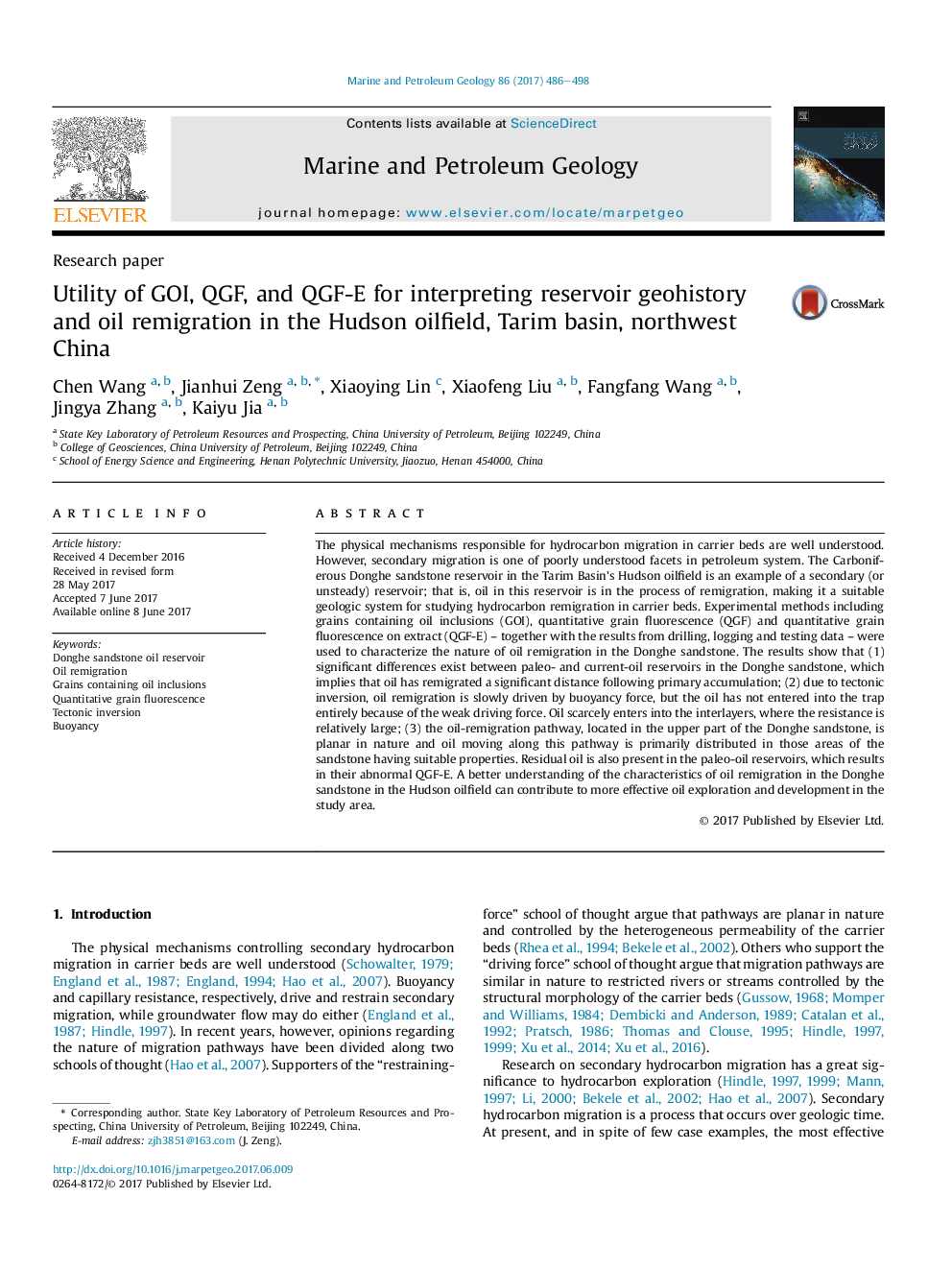| کد مقاله | کد نشریه | سال انتشار | مقاله انگلیسی | نسخه تمام متن |
|---|---|---|---|---|
| 5781988 | 1637141 | 2017 | 13 صفحه PDF | دانلود رایگان |

- An excellent geologic example for hydrocarbon remigration is shown.
- Quantitative Grain Fluorescence experiments are used to identify the oil reservoirs.
- Oil has remigrated a significant distance in the Donghe sandstone post- Permian age.
- The driving force for remigration is buoyancy under resistance by capillary forces.
- Oil migrates like a sheet and is controlled by the heterogeneity of sandstone.
The physical mechanisms responsible for hydrocarbon migration in carrier beds are well understood. However, secondary migration is one of poorly understood facets in petroleum system. The Carboniferous Donghe sandstone reservoir in the Tarim Basin's Hudson oilfield is an example of a secondary (or unsteady) reservoir; that is, oil in this reservoir is in the process of remigration, making it a suitable geologic system for studying hydrocarbon remigration in carrier beds. Experimental methods including grains containing oil inclusions (GOI), quantitative grain fluorescence (QGF) and quantitative grain fluorescence on extract (QGF-E) -- together with the results from drilling, logging and testing data -- were used to characterize the nature of oil remigration in the Donghe sandstone. The results show that (1) significant differences exist between paleo- and current-oil reservoirs in the Donghe sandstone, which implies that oil has remigrated a significant distance following primary accumulation; (2) due to tectonic inversion, oil remigration is slowly driven by buoyancy force, but the oil has not entered into the trap entirely because of the weak driving force. Oil scarcely enters into the interlayers, where the resistance is relatively large; (3) the oil-remigration pathway, located in the upper part of the Donghe sandstone, is planar in nature and oil moving along this pathway is primarily distributed in those areas of the sandstone having suitable properties. Residual oil is also present in the paleo-oil reservoirs, which results in their abnormal QGF-E. A better understanding of the characteristics of oil remigration in the Donghe sandstone in the Hudson oilfield can contribute to more effective oil exploration and development in the study area.
Journal: Marine and Petroleum Geology - Volume 86, September 2017, Pages 486-498